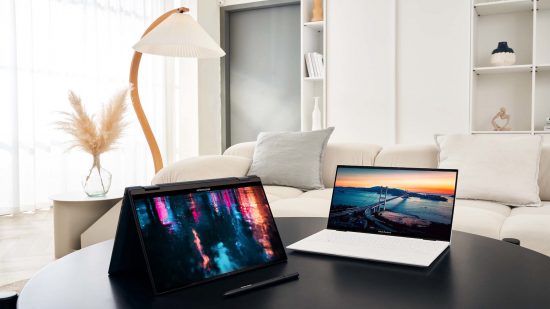Here at Gear Nuke, we’ve put together a handy laptop buying guide to help overcome what can be quite a daunting experience. You already have a good idea of what you’ll be using your laptop for, but are probably stuck trying to pick out the right one. One thing no one ever points out is that this is completely normal! It’s a big purchase to commit to and the last thing anyone wants to do is walk away with the wrong product.
There is a lot to consider and some of the factors in play you may never have even heard of. Lining up your specific needs and highlighting where you need to look for answers can take a ton of stress out of the situation. With that said, here’s the Gear Nuke laptop buying guide to help you make the right purchase and end up with the best laptop possible!
What are the specifications of a good laptop?
This is a broad question, but one we can answer. If you’re in the market for a simple laptop that can do a little bit of everything, it’s easy to pop out some specs that you need to pay attention to but we appreciate that there are other factors, such as budget, that may come in to play.

CPU
With the CPU, you’re typically looking at one of two brands, Intel or AMD. Both are fine for typical use but the numbers you’re paying keen attention to are cores and GHz. Cores are the number of threads within a processor and effectively the more cores you have, the better the laptop will be at handling multi-tasking. The second fact, GHz, is the number of cycles your processor can complete, numbered in the billions. If your processor runs at 2.3GHz, it can complete 2.3 billion cycles per second.
In simple terms, we’d advise that anywhere between 4-8 cores alongside 2-4GHz which is more than enough to get you by. All of this information is available in detail when looking at product descriptions.

Graphics
Ensuring you have a good graphics card or GPU is only really necessary if you are gaming or using the laptop for editing. If not, you can often settle for Intel or AMD integrated graphics. If you insist on having dedicated graphics, then you need to ensure that your card has enough memory. This is different from the RAM or storage that your laptop has and most good cards have at least 6GB of memory.
If you’re after power for gaming, editing or animation then NVIDIA are often seen as the brand to side with. This doesn’t mean that AMD shouldn’t be used or trusted, but they are seen a second best in a two horse race. It all comes down to the budget you’re working with and it may be that you make your decision based on what you can afford.

RAM
A number you’ll see in every specs list that you may not be entirely clear on is RAM. This is different to your general storage and the most common denominations are 4GB, 8GB and 16GB. Anything over 16GB for a general use laptop is overkill and realistically between 4-8GB will do the trick anyway.
RAM is random access memory and this is where your PC or laptop will store information that it may need to call upon at a moments notice, so you can see why it’s important to the day-to-day operations. It can be especially important it you are going to be running intense programs or gaming.

Storage
Finally, the last major component of internal hardware you’ll need to consider when buying a laptop is the storage. SSD technology has advanced enough now to the point where most laptops have them as standard and you won’t want anything that has a simple mechanical hard drive disc or HDD.
SSD storage is faster and due to a lack of moving parts involved, can typically be far more durable too. 256GB is probably the lowest you’ll want to go but that would need to be well maintained as it’s still quite limited. The ideal storage solution will be between 500GB-1TB.
What else can you look for?
Another fairly major component when buying a laptop is the display. You’re going to want a screen that is at least full HD, meaning the advertised resolution should be 1920 x 1080. When looking for anything better than this, you’re targeting QHD (2560 x 1440) or UHD/4K (3840 x 2160).
Screens can also be a standard LED or the far superior OLED which tends to produce a much nicer and clearer colour output. That being said, OLED technology is only just starting to become obtainable without a considerable cost, so you will need to factor this in when budgeting for your laptop.
Another great feature to keep an eye out for is whether or not the speakers of the laptop are standard or have been spiced up with third-party tech. You’ll often see JBL, Dolby and B&O pimping out laptop speakers but other brands will throw their hat in the ring occasionally too. Better speakers means better audio for music and video and that’s always a bonus!
Finally, you have the size and weight of your laptop. Screen sizes are all over the place but you probably don’t want to drop below 13.3” and anything over 17.3” might be a little too large! As for weight, anything under 2kg should be comfortable to move around and there really isn’t anything considered too light as the general makeup of a laptop prevents them from often being below 1kg.
